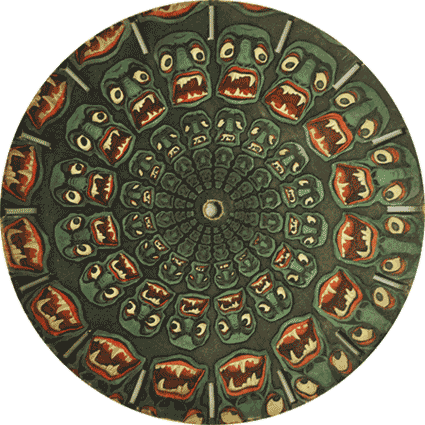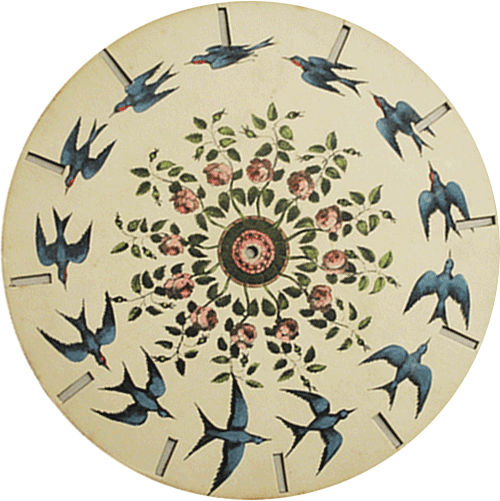









(An Accidental Recitation Of) The Cosmic Number












L'étrnèbre:
Natalie Chami: synths, electronics
Brian Griffith: electric bass, electronics
live improvisation July 2010



















In 1832 Belgian physicist Joseph Antoine Ferdinand Plateau (Joseph Plateau) of Brussels became first person to demonstrate the illusion of a moving image. Plateau's device, which he called the phenakistoscope ("spindle viewer"), used the persistence of motion principle to create an illusion of motion. It consisted of two disks, one with small equidistant radial windows, through which the viewer could look, and another containing a sequence of images drawn around the disk in concentric circles. When viewed in a mirror through the first disk's slots, the pictures on the second disk appeared to move. The synchronization of the windows and the images created an animated effect. Also in 1832, Viennese mathematician and inventor Simon von Stampfer invented a similar device, which he called a stroboscope.
Two years later, 1834 when British mathematician William George Horner invented what came to be known as the zoetrope. Horner named his device a "daedalum," but it was widely called "the wheel of the devil." Perhaps the reference to the devil had less to do with Horner's device than with the often psychodelic and sometimes grotesque animated designs created for it.
Horner's invention made two significant improvements over the phenakistoscope: it could be viewed without a mirror, and more than one person could view the moving pictures at the same time. Horner's device did not become widely popular until the 1860s when it was patented by both English and American makers, including the American game pioneer Milton Bradley. An American developer William F. Lincoln named his version of the toy the "zoetrope", meaning "wheel of life." This name became widely applied to the device.





















If you believe that meaning comes in sequences and takes the form of a trajectory through a number of different points, then what you really care about is movement: the real possibility to move from one point to another fast enough to prevent the overall shape from vanishing. Now what is the source of this movement, and what keeps it going? Your curiosity, of course, and your desire for experience. But these aren’t enough, believe me. This movement is also propelled by the points through which it passes … [The surfer] has a chance to build real sequences of experience only if at each stop along his journey he gets another push. Still, they’re not really stops, but systems of passage that generate acceleration.
- Alessandro Baricco



The true mandala is always an inner image, which is gradually built up through (active) imagination, at such times when psychic equilibrium is disturbed or when a thought cannot be found and must be sought for, because it is not contained in holy doctrine.
- Carl Jung, Psychology and Alchemy